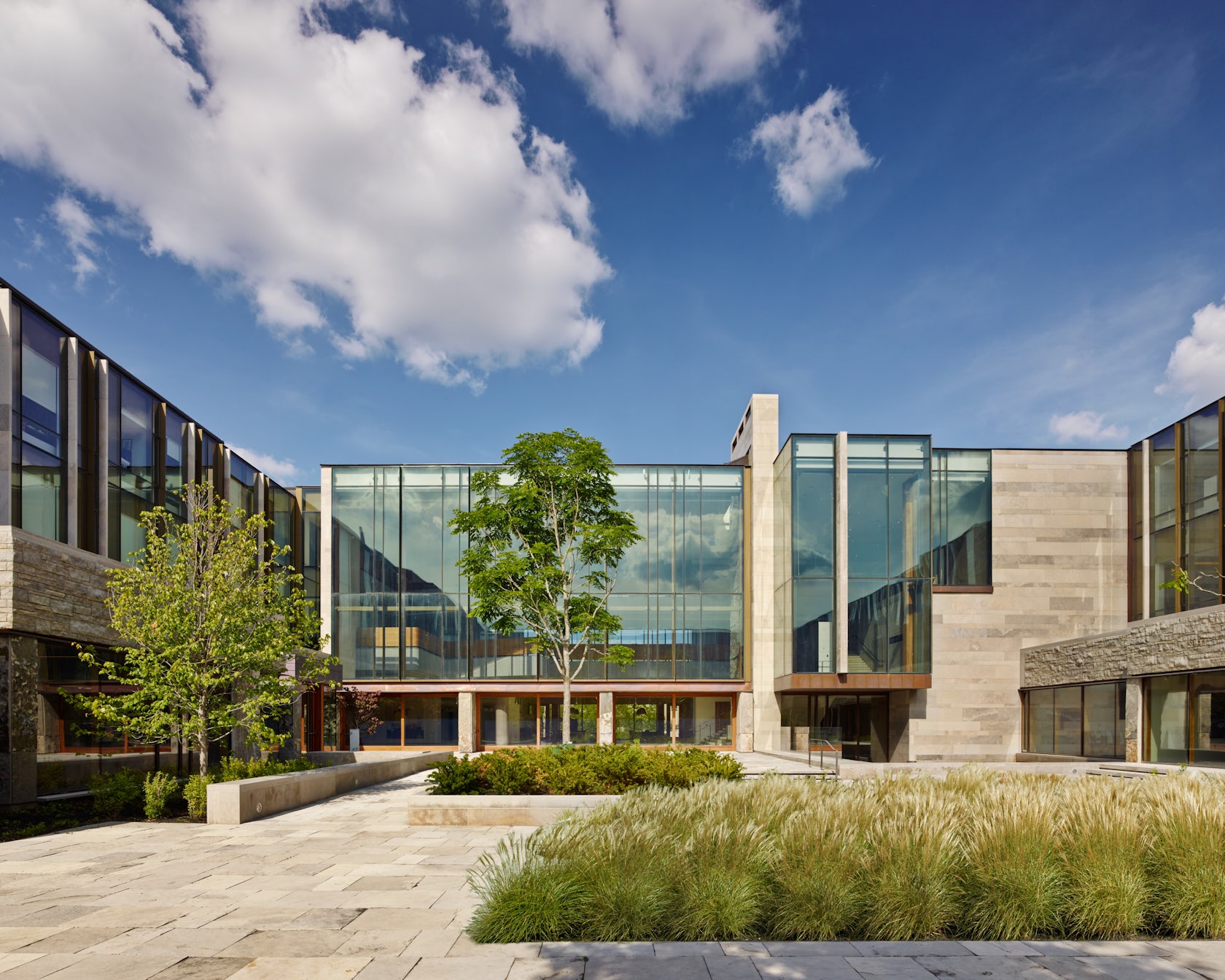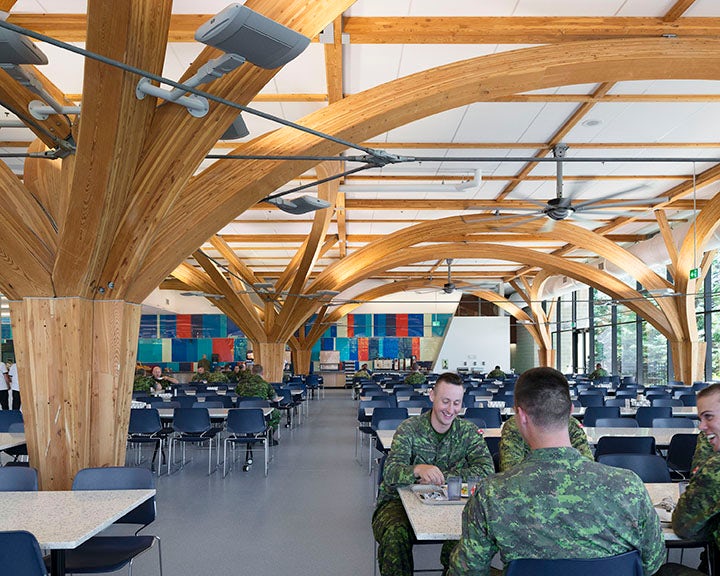Architectural associations exist around the world to support local architects and encourage the public to appreciate the contributions of architecture in creating good cities, good urban environments and — simply put — places where people want to be.
Toon Dreessen is the President of the Ontario Association of Architects, and he talked with Architizer about the recent finalists of the 2016 OAA Awards as well as standards for architecture in Ontario and throughout Canada. Toon believes that “the OAA is very lucky,” as it holds one of the largest population bases in Canada: “The province of Ontario has 13 million people, so we have a large stable economy, we have some amazing centers of finance and business.”
Toon prides Ontario for being one of those wonderful places to live in, with Toronto placing fourth in the global index of livable cities last year (in fact, three of the top five places in the rankings are occupied by Canadian cities). “We have great cities throughout the entire province that really address the full spectrum of what good living is,” says Toon. “Beautiful natural landscapes, great industry and fantastic educational opportunities.”

The Mississauga Public Library Project by Rounthwaite, Dick and Hadley Architects, Mississauga, Ontario

© Tom Arban
George Brown College, Waterfront Campus by Stantec Architecture and KPMB Architects in joint venture, Toronto, Ontario
Given those advantages, Toon emphasizes the potential within Ontario for creating excellence. “I think we’re really on the cusp of making a national and international difference in architecture and design,” he continues. “Ontario architects are known around the world for their amazing ability,” especially when it comes to addressing the effects of climate change. In Toronto, Canada’s first 2030 district is an area where high-performance buildings are increasing business and property profitability, reducing environmental impacts and improving occupant health.
Toon explains that addressing climate change in areas like the 2030 District goes beyond simply achieving LEED certifications or putting solar panels on the roof of a building. Instead, the focus aims to create net-zero buildings, and Toon claims that doing so “is actually possible and there’s enormous support for doing that.” The provincial agenda in Ontario is pushing hard to address climate change and encourage the transition into a carbon-neutral economy, which is an amazing opportunity for architects in the province and throughout the country who should aim to make great designs that make sense and contribute to this overall goal.

Robert H. Lee Alumni Centre, University of British Columbia by KPMB Architects and HCMA Architecture + Design in joint venture, Vancouver, British Columbia

The Waterdown Library and Civic Centre by Rounthwaite, Dick and Hadley Architects, Waterdown, Ontario
The submissions for the awards program feature strong elements of sustainable design and show how those proposals can contribute to the overall aim for a carbon-neutral economy. “There are sustainability metrics that are provided as part of the submissions packages that try to address some of these things,” explains Toon, but he also points out that meeting basic building codes in Ontario already shows that the architect has achieved an incredibly high bar of sustainability, “some of the highest environmental standards in North America.”
If the idea is that something built in Ontario is going to be sustainable and responsible, it is the role of the OAA to push for this even further in the way they train and educate the members and public, which Toon assures they are: “We need to stress that the innovation that comes with tackling climate change, that’s not something that comes out of a box, you can’t download a piece of software to solve climate change. It takes innovation, it takes thinking, and that’s what our architects are good at.”

Richard Ivey Building, Ivey Business School, Western University by Hariri Pontarini Architects, London, Ontario

Toronto Public Library Scarborough Civic Centre Branch by LGA Architectural Partners and Phillip H. Carter, Architect, in joint venture, Toronto, Ontario
“In general, the Ontario building code sets high standards for sustainability, for environmental responsibility, energy conservation, […] on everything from building with local design, to the type of glazing, the type of insulation, light levels and energy use.” If people push back, asking for something “cheap and basic,” the reasoning — and rightly so — is that the public should be educated about and acknowledge the investment that is being made in a specific building, which will last generations.
Many of the projects shortlisted in the OAA Awards are aimed for public use, such as entities of the Toronto Public Library, the Mississauga Public Library Project and the Waterdown Library and Civic Centre or for institutional use, in the case of the Robert H. Lee Alumni Centre at the University of British Columbia, the Richard Ivey Building at Western University and George Brown College’s Waterfront Campus, all pictured above. “Part of it,” explains Toon, “is that the public institutions […] recognize that they are the building owners for the long term, and so there’s value in investing in something that may cost slightly more today but is worthwhile in the lifecycle cost of the building.”

© Tom Arban
Commonwealth Community Recreation Centre by MacLennan Jaunkalns Miller Architects and HIP Architects in joint venture, Edmonton, Alberta

© Brenda Liu
Curtiss Kitchen and Dining Facility by ZAS Architects and Jean-Christian Koch, Architecte, in joint venture, Borden, Ontario
All this takes a certain mindset and a culture of appreciation from both the architects and the clients. It is part of the OAA’s mandate to educate the public so that clients understand why supporting sustainable projects is important, even when it raises the cost of projects because it involves hiring the right people, experts in the fields of engineering and green building. The pitch coming from the OAA, and Toon himself, states a strong need to awaken: “Let’s invest in that design, let’s invest in that process and get the best possible library we can, not for the cheapest dollar we can spend today, but for the best value we get over its lifecycle.”
For example, the Borden Park Pavilion, pictured below, could be a fairly modest pavilion in a park, and instead, there is a visible amount of effort that goes into the details and the amenities of the space. The same goes for the Commonwealth Community Recreation Centre, or the Curtiss Kitchen and Dining Facility, where architects have taken the time and investment to design and build a great facility that responds to its contexts and needs. Thanks to the clients’ commitments to investing in lasting buildings, those buildings show high levels of technology and expertise, making them highly sustainable as well as places people want to be in.

Borden Park Pavilion by gh3, Edmonton, Alberta, Canada

© OTTE
Aga Khan Museum by Moriyama & Teshima Architects in association with Maki and Associates, Toronto, Ontario
The response of the public is all the more encouraging, as people appreciate the wonderful spaces their communities are rewarded with, explains Toon. They understand very quickly that this architecture is worth investing in, and the effects carry over so that when something is done on the cheap, and there’s a waste of money, the public turns to the elected officials and goes, “Really? This is what you’re wasting my money, my tax dollars on?” At times, people wonder about the cost of a certain project, but they quickly realize that the investment is worthwhile because they see visible impacts as this new asset is appropriated by the community.

© Ben Rahn/A-Frame Inc.
Harbord Towns by superkül, Toronto, Ontario

Prince Arthur’s Landing, Thunder Bay Waterfront by Brook McIlroy, Thunder Bay, Ontario
There are projects across the spectrum of finalists for the OAA Award for Design Excellence that demonstrate the ability of Canadian architects across building types, occupancies, scales and contexts. Toon takes pride in OAA’s members and their innovative spirits. “The ability to be innovative is something that takes talent,” he says. “You can’t innovate based on cheap fees, low price bidding, on squeezing consultants with unrealistic timeframes, schedules and expectations. You can innovate by hiring an architect, giving them the capacity, the tools and freedom to express their talent and to do their jobs properly.”

Skygarden House by DUBBELDAM Architecture + Design, Toronto, Ontario

Surrey Operations Centre and Works Yard Redevelopment by Taylor Kurtz and Rounthwaite, Dick and Hadley (Design Architect), Surrey, British Columbia
In recent years, internationally renowned architects — like Bjarke Ingels with his proposals for Vancouver House and a plan for Toronto’s King Street West — have entered the architectural scene of Canadian cities, and associations like the OAA see this exchange as a great and lasting opportunity for Canadian architects. “There’s an incredible excitement for what a talented individual like this could do, and what that can mean for the rest of architects,” he explains. Indeed, when firms like BIG come into a city with a project, they often partner with a local firm, working together on local codes and implementing a design within those codes that can then be replicated in other contexts. Even if Bjarke Ingels’ projects don’t all get built, Toon explains that the fact that the idea exists, which has stimulated discussion and media coverage, is a way to get the public’s attention.
Despite these positives, systemic issues still exist. In large-scale projects, commissions don’t go to an architect first. Instead the hospital, the community center or the city’s public library hires a developer, and together, they develop the projects through a kind of public-private partnership model that “isn’t in the public interest,” Toon says. “It’s not in the best interest of the public dollar, it’s not less expensive, it’s a transfer of responsibility that [results in] municipalities shirking their responsibilities instead of leading and taking charge of things. Let’s hire the people who are most talented,” he continues, “who have the ability to come up with a design. Let’s hire the architect.”

Go Home Bay Cabin by Ian McDonald Architect, Georgian Bay Township, Ontario

© Olivier Blouin
Stade de soccer Montréal, Saucier+Perrotte Architectes and Hughes Condon Marler Architects (now HCMA Architecture + Design), Montréal, Quebec
10 winners have been selected for the OAA Award for Design Excellence, and the People’s Choice Award is now open for voting until April 20th. In addition to presiding over the Ontario Association of Architects, Toon Dreessen runs Dreessen Cardinal Architects, a 10-person practice in Ottawa, Ontario.




